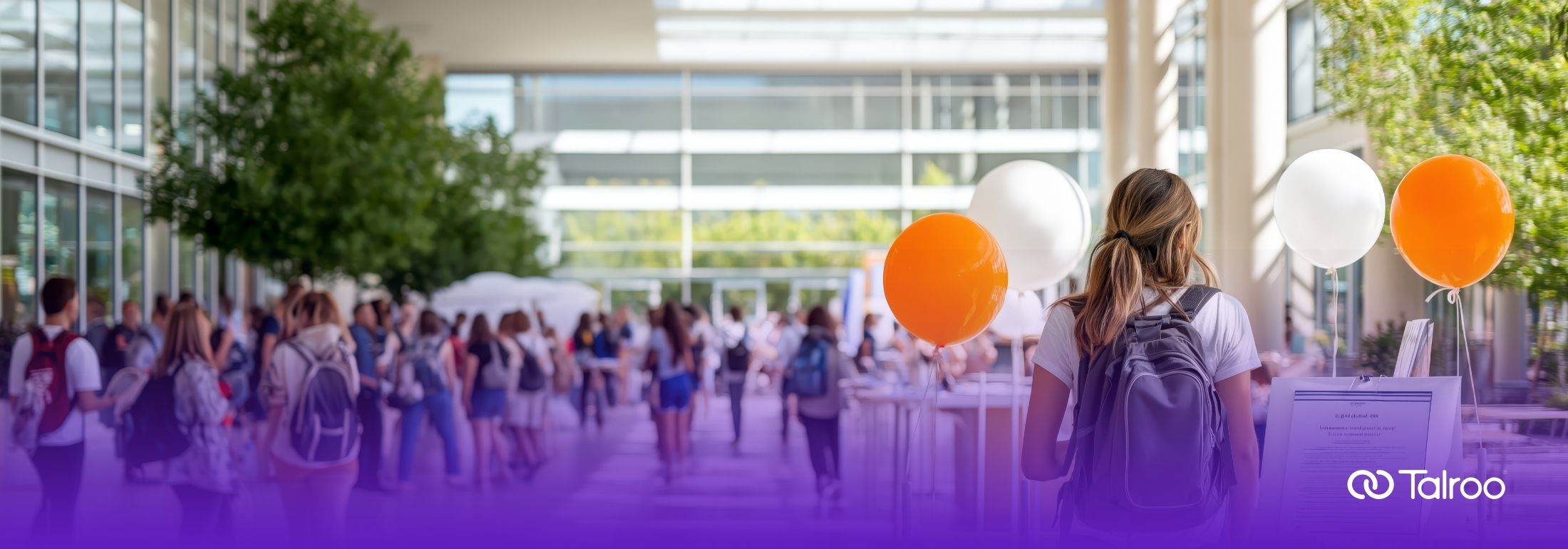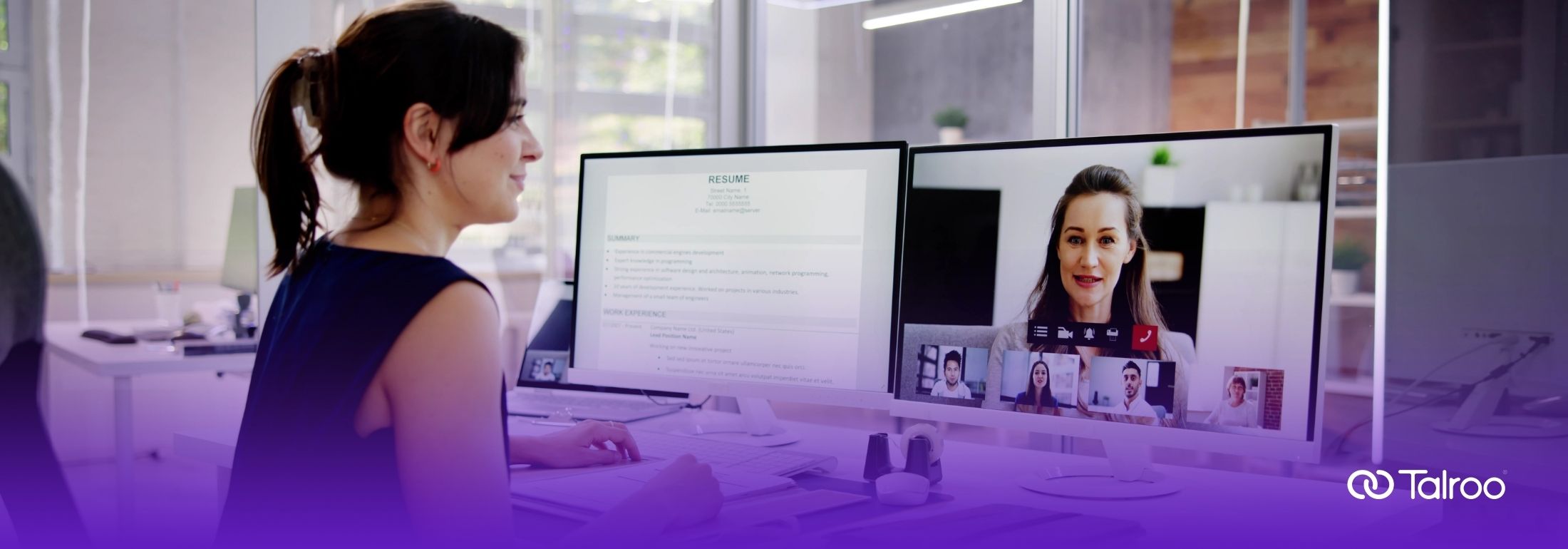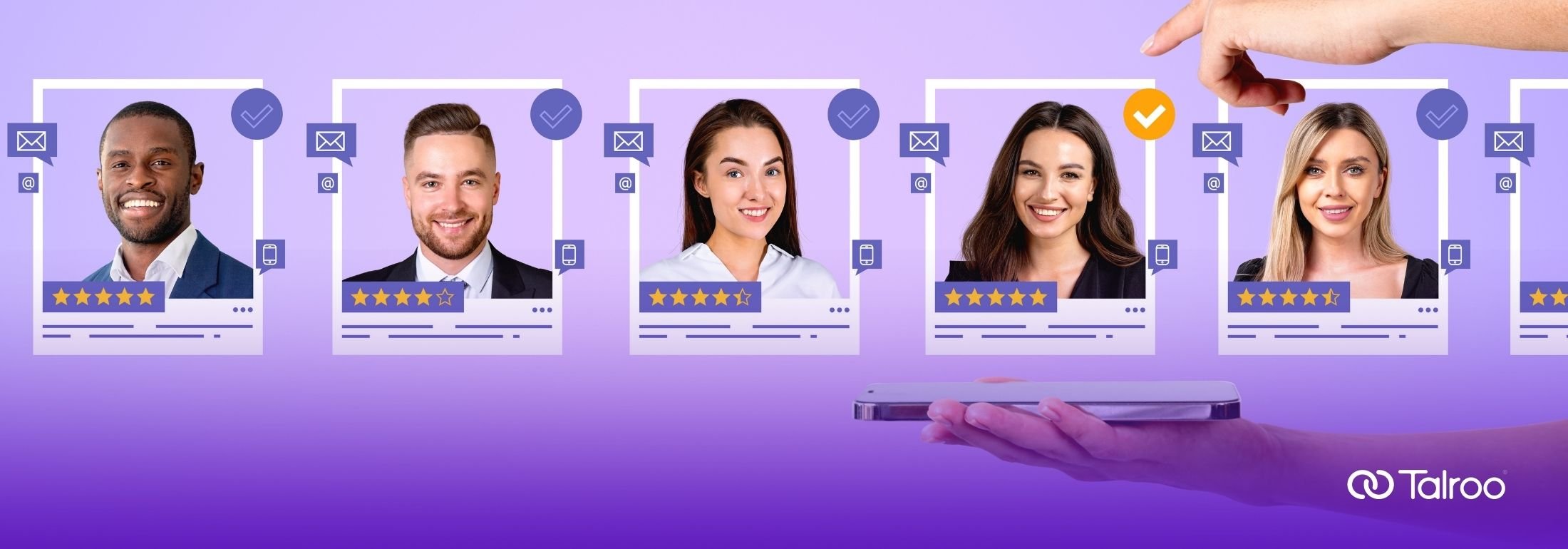
Hiring Events: The Recruiter’s Guide to Turnout, Follow-Up, and ROI
Hiring events can be a game changer for talent acquisition teams. Whether you’re hosting a local career fair, a virtual hiring day, or an industry-specific networking event, the opportunity to engage directly with candidates helps fast-track the hiring process. But getting a strong turnout, engaging attendees, and converting interest into hires takes more than just reserving a room or setting up a Zoom link.
In this guide, we’ll walk through how to plan and execute hiring events that drive real results, from turnout to follow-up. We’ll also explore how automation and AI can help streamline the process, plus provide a “Day-of Checklist” and follow-up script examples to support your success.
Why Hiring Events Still Matter
Despite the rise of digital job boards and AI-powered sourcing tools, hiring events offer one critical thing: human connection. Candidates want to engage with real people, ask questions, and get a feel for your company culture. This is particularly important for roles with high turnover or large-scale hiring needs, such as retail, healthcare, hospitality, and manufacturing.
According to Talroo’s recent webinar, Hiring Events: Real People, Real Connections, employers using events as part of their talent strategy consistently outperform others on time-to-fill and quality-of-hire metrics. The key is in the planning and follow-through.
Step 1: Define the Purpose and Goals
Before you send out invites or choose a platform, clarify the objective of your hiring event. Are you looking to:
- Fill a specific number of openings?
- Build a candidate pipeline for future needs?
- Hire on-the-spot?
- Introduce candidates to your brand and culture?
Establishing clear goals will guide every step that follows, from venue choice to how you measure ROI. If your aim is to make immediate hires, you’ll need to build in processes for same-day interviews and pre-event screening.
Step 2: Plan with Precision
A well-run hiring event requires more than enthusiasm. It takes strategic coordination. Talroo’s Hyper-Organized Event Checklist is a great starting point for planning both in-person and virtual events.
Key planning elements include:
- Date and Time Selection: Consider your candidate demographic. Evening or weekend events may work better for employed candidates.
- Venue or Platform: For virtual events, select a platform that supports video, chat, breakout rooms, and registration tracking. For in-person, ensure there’s signage, interview stations, and accessibility.
- Staffing: Assign roles—greeters, interviewers, tech support, and a point person for escalations.
- Technology Setup: Ensure stable internet, access to digital forms, and backup plans for any tech failures.
- Pre-Screening Tools: Use AI or automation to pre-qualify attendees based on role fit, work eligibility, or basic requirements.
Step 3: Attracting the Right Candidates
You can’t have a successful event without the right people in the room or online. That means your marketing efforts need to be both broad and targeted.
Tactics to maximize turnout:
- Leverage Programmatic Advertising: Platforms like Talroo enable you to target job seekers by location, behavior, and intent, ensuring your event ad dollars go further.
- Email and SMS Reminders: Confirmations, countdowns, and reminders increase attendance rates significantly.
- Promote on Social Media: Focus on local and niche communities on LinkedIn, Facebook, and industry-specific groups.
- Partner with Local Organizations: Workforce boards, community colleges, and veterans’ groups can help spread the word.
- Offer Registration Incentives: Gift cards or raffle entries can nudge candidates to commit.
Step 4: Engaging Attendees During the Event
When the big day arrives, it’s all about making a great impression and collecting useful data. Whether you’re face-to-face or on screen, candidate experience is key.
Use the following engagement tactics:
- Welcome Every Attendee Personally: A friendly introduction sets the tone and encourages participation.
- Set Expectations: Let candidates know the structure—how long it’ll take, who they’ll meet, and next steps.
- Track Attendance and Interactions: Use sign-in tools, QR codes, or virtual platform analytics.
- Provide Value: Share printed materials or links to videos, job descriptions, FAQs, or benefits information.
- Streamline Interviews: Use a structured interview format and take notes for easy follow-up and evaluation.
- Build a Talent Pool: Even if someone isn’t a fit for today’s openings, keep them warm for future roles.
Use this Day-of Checklist from Talroo to ensure nothing is missed: Event Checklist PDF
Step 5: Follow-Up That Converts
The hours and days following your event are where the ROI happens. Candidates have interacted with your brand and are most engaged, don’t lose the post-event momentum.
Post-Event Follow-Up Tips:
- Subject line: “Thanks for attending our hiring event”
- Message body: Reiterate your appreciation, share next steps, and include application links, recruiter contact information, or a scheduling link.
Pro Tip: Use a branded email template that reflects your employer identity. Consider adding a brief survey link to collect candidate feedback while the experience is still fresh.
Personalize Outreach When Possible
- Mention specifics: “It was great to hear about your experience at XYZ company…” or reference something they said during an interview.
- Use merge fields for semi-automated personalization if you’re following up with a large volume of attendees.
Pro Tip: Use your notes or CRM data to tailor messaging by role, location, or background. This makes candidates feel seen and valued, which can increase response rates and acceptance.
Move Qualified Candidates Quickly Through the Funnel
- Schedule final interviews or send offers within days, not weeks. Delays can lead to candidate drop-off, especially in competitive labor markets.
- Use scheduling automation tools to reduce back-and-forth and shorten time-to-hire.
Pro Tip: Set aside dedicated recruiter or hiring manager time in the days immediately following the event for callbacks or interviews.
Nurture the “Not Yet” Crowd
- Add attendees who weren’t an immediate fit to your CRM or ATS, tag them by role or interest, and set reminders for future opportunities.
- Send a follow-up email 2–3 weeks later to keep your employer brand top-of-mind and check if they’re still interested in future opportunities.
Pro Tip: Consider adding them to a passive talent newsletter or drip campaign with relevant job updates, company news, or upcoming event invites.
Sample Follow-Up Scripts
For Qualified Candidates:
Subject: Next Steps After Our Hiring Event
Hi [Name],
It was a pleasure speaking with you at our recent hiring event. Based on our conversation, we think you’d be a great fit for [Position].
We’d like to move you to the next step in our process, which involves [next step]. Please use this link to schedule a time: [Scheduling Link]
Looking forward to speaking with you again soon!
[Your Name / Team]
For General Attendees:
Subject: Thanks for Joining Us
Hi [Name],
Thank you for attending [Event Name]. We appreciate your interest in working with us. While we’re currently moving forward with a few candidates for specific roles, we’d love to stay in touch for future opportunities.
Keep an eye on our job board: [Link]
Best,
[Your Name / Team]
Step 6: Measure and Optimize
You can’t improve what you don’t measure. After your event, evaluate what worked and what didn’t.
Key metrics to track:
- Event attendance rate vs. registration
- Number of interviews conducted
- Number of job offers made
- Time-to-hire compared to other sources
- Candidate satisfaction (survey attendees post-event)
- Cost-per-hire and ROI
Use the insights to adjust future event strategies. Maybe you need to market earlier, tweak the event time, or refine your follow-up cadence. The more data you gather, the more efficient your events will become.
Leveraging AI and Automation
AI isn’t just for sourcing and screening. It can support hiring events too. For example:
- Auto-qualification: Use AI to assess resumes submitted at registration and route top candidates for same-day interviews.
- Chatbots: Engage candidates before and during the event with answers to FAQs and reminders.
- Scheduling Tools: Automatically book interviews with recruiters or hiring managers.
- Analytics: Use machine learning to identify which events, ads, or channels lead to actual hires.
For a deeper dive, watch Talroo’s On-Demand Webinar on Hiring Events, where industry experts share their best practices and lessons learned.
Final Thoughts: Connect With Candidates
Hiring events are more than just a recruiting tactic. They’re a powerful way to connect with candidates, tell your employer brand story, and shorten the hiring cycle. But success doesn’t happen by accident. With the right planning, marketing, engagement strategy, and follow-up, your next event can deliver real results.
Looking to level up your hiring event game? Explore Talroo’s hiring event solutions, tools, and strategic support to help you attract and hire the right talent — faster.
Additional Resources:
Ready to turn your next hiring event into a high-ROI success? Start planning today.




